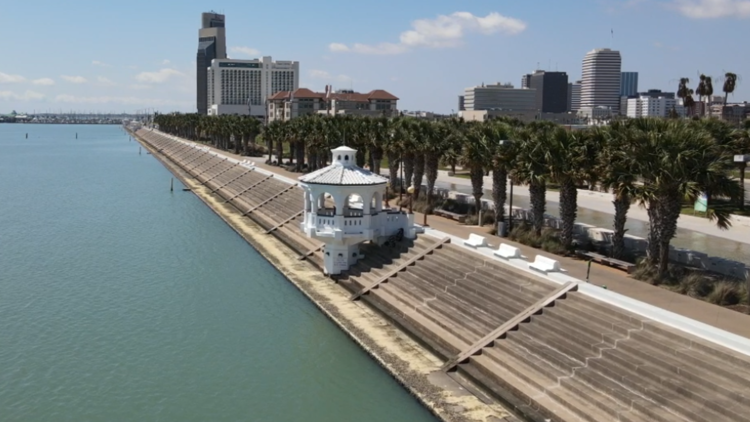CORPUS CHRISTI, Texas — The Corpus Christi Sea Wall is an iconic piece of the Sparkling City by the Sea’s landscape. Perhaps you have photos with family on the steps, or maybe you’ve brought friends from out of town to walk along its stretch in downtown Corpus Christi.

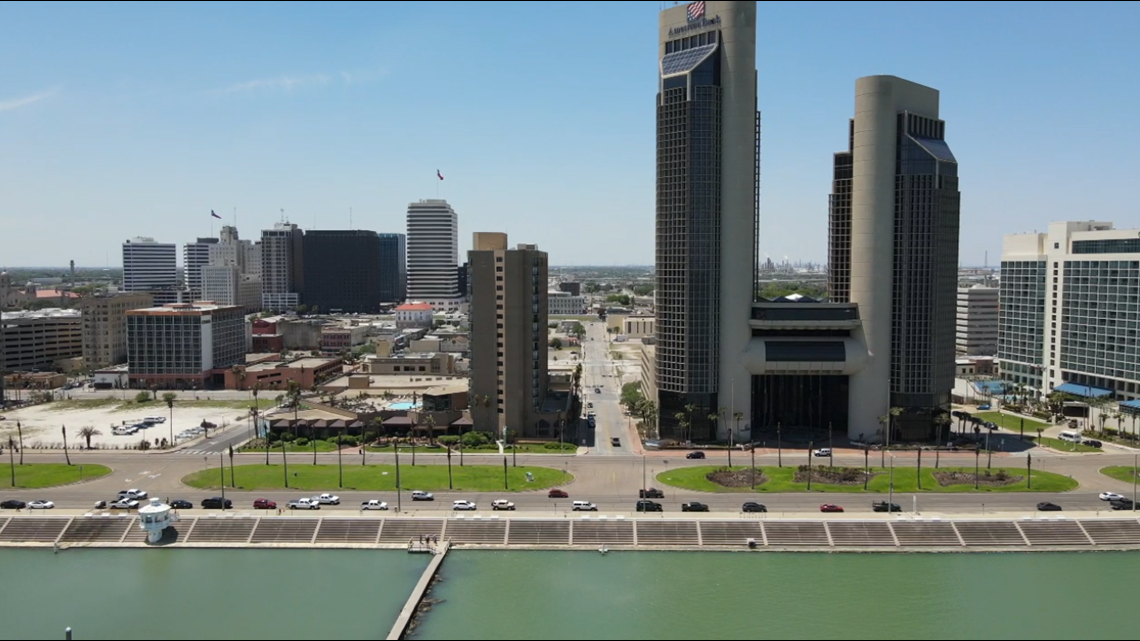
For many of us, it would be hard to imagine downtown Corpus Christi without the sea wall there; the landscape would be drastically different. The wall’s primary purpose is to prevent flooding during a storm surge and massive waves created by hurricanes or tropical storms.
“Storm surge is basically created by wind, blowing across the water's surface. Just like if you blew into a full glass of water, it’s going to come out on the other side, that’s the same thing that happens when you have a storm blowing across the gulf in the bay,” explained Jeff Edmonds, Director of Engineering for the City of Corpus Christi. “On top of that, you have waves as well.”
The sea wall was designed to have an elevation of 14 ft above sea level. According to Edmonds, it also relies on a few other things: two major pumping stations to flush water out of downtown as well as the salt flats levee on the backside, which protects against storm surge coming up the inner harbor.
A Quick Timeline of the Sea Wall’s History:
1890: Conversations regarding building a seawall 500 feet out from the shoreline began.
1909: The County Judge at the time pushed for the seawall plan, but was unable to convince the City.
1916, 1919 & 1933: Hurricanes cause major downtown damage & flooding.
1938: Corpus Christi voters approve a $650,000 bond. More funding was provided through the State Legislature. A second bond gets passed for $1.1 million.
1939: A construction contract is awarded to J. DuPuy of San Antonio.
1941: Work on the seawall was completed in March.
1988: Seawall becomes a designated Texas Historic Civil Engineering Landmark.
2000: Bond proposition passes; major repairs and upgrades begin.
2006/2007: Major sea wall repairs are completed, extending seawall life by 50 years.
Though the sea wall has weathered many storms, city officials say it’s one of those things you never want to stop improving. According to Edmonds, a new contract will be starting soon that will address minor issues and have some cosmetic benefits, aimed mostly at preserving the condition.
When asked about going into this upcoming hurricane season, which is also predicted to be an active one, Edmonds says everything related to the sea wall is looking just fine, but he did share that his “biggest concern” would be the salts flats levee, which has been described as the “Achilles heel” of the system.
“It needs improvement and we know that, and the design is underway to do that,” Edmonds said. “The mound on the left is the levee. The water is the ditch (refer to photo shared from city PowerPoint below). The storm surge will come up that ditch in a storm event, and the levee is what protects downtown from the flooding coming in from the backside. That one is in need of work."

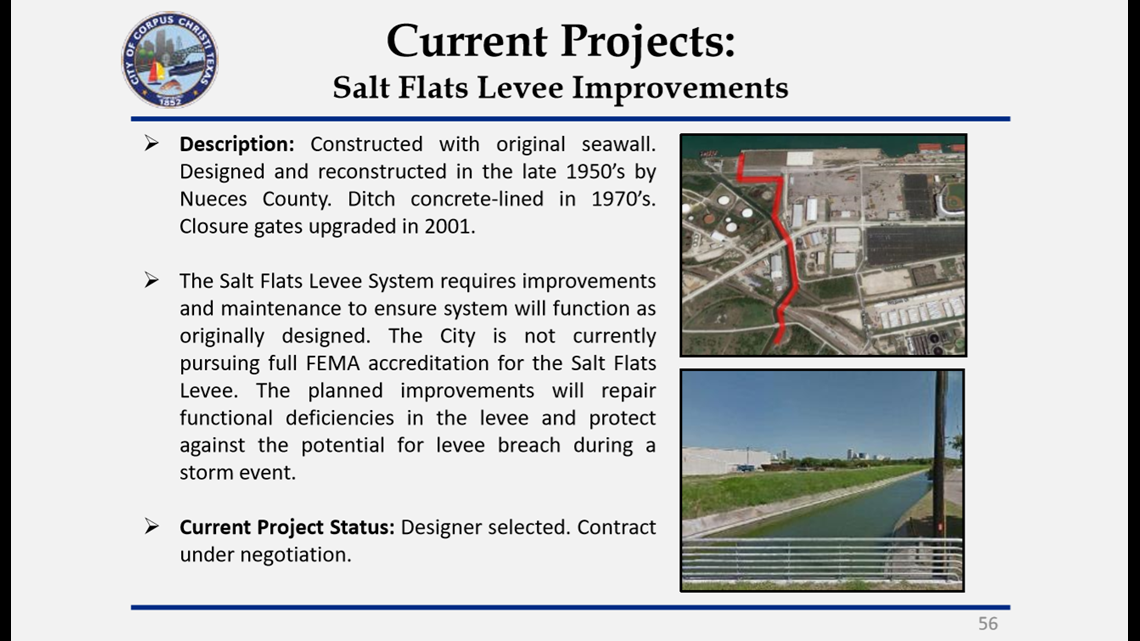
"We’re afforded some level of protection, but there is a theoretical event that would stress that system beyond its ability to withstand, so it’s certainly -- the sea wall is far more robust than that levee.”
WATCH: A breakdown of the City of Corpus Christi's Flood Protection System
Gabriel Hinojosa, Assistant Director of Public Works for the City of Corpus Christi, also works closely in monitoring the city’s sea wall and making improvements to it when and where as needed.
“Recently at council, we passed a maintenance project to prevent any minor deterioration during those next 50 years,” Hinojosa said.
He explained the wall is also part of a multi-component system for the downtown flood protection system, which extends from McGee beach to the Art Museum of South Texas’s north end, with the remaining system extended to the other side of Whataburger Field.
The seawall acts as an added layer of protection for downtown and all of the businesses who call that area home.
Alyssa Barrera-Mason is the Executive Director of the Downtown Management District. When inclement weather approaches, her office will work closely with the city’s emergency management division to follow their lead in preparing downtown businesses with what they need to know ahead of the storm.
“The sea wall is definitely an iconic physical feature right there on the bay front, but really it was to protect all of this downtown area after the hurricane of 1919. So we really are relying on that sea wall for that level of protection,” said Barrera-Mason.
“I’ve been through a few hurricane seasons, we’ve had some close calls. Fortunately, downtown Corpus Christi has received minimal damages from the storms. We’re always aware that we’ve been lucky for a while, so we’re looking forward to the city ramping up some of their improvements, like the seawall improvement project.”
More recently, the sea wall did see a noticeable storm surge from Hurricane Hanna, which touched down in South Texas on July 25, 2020.
Clear evidence of that storm surge could be seen outside and within the walls of the Art Museum of South Texas. It’s a day that Deborah Fullerton, curator of exhibitions for the museum, remembers all too well.

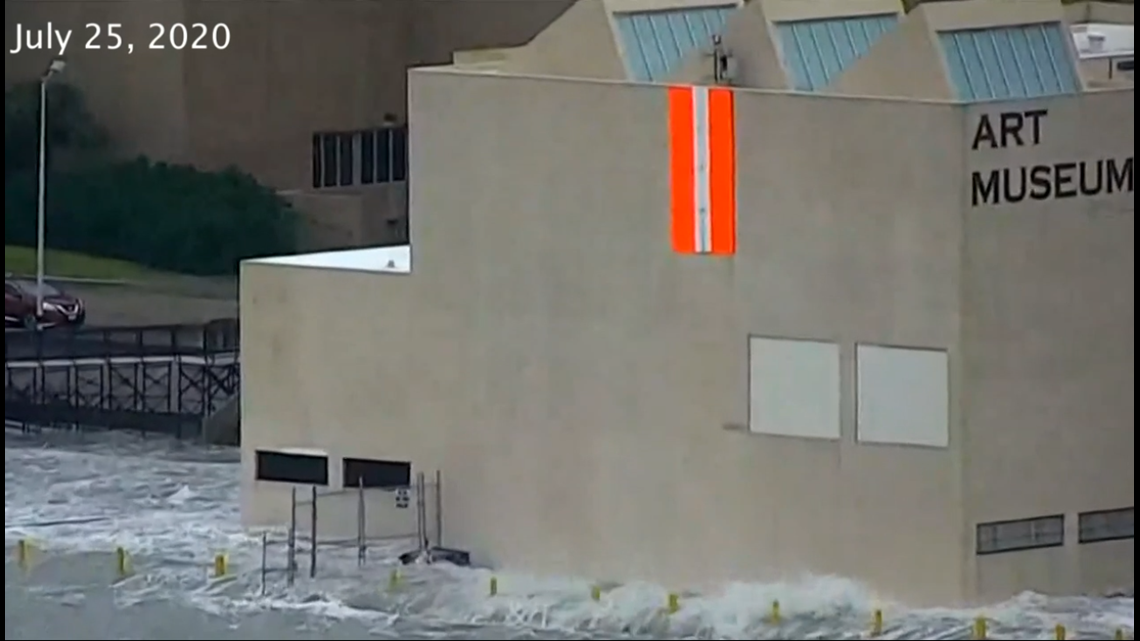
“It was the surge that none of us really anticipated,” Fullerton said. “The building was dark, but we still had power, and the water was swirling. The doors you’ll see are brass and they have gaps in them, so the water did breach and seep into the building.”

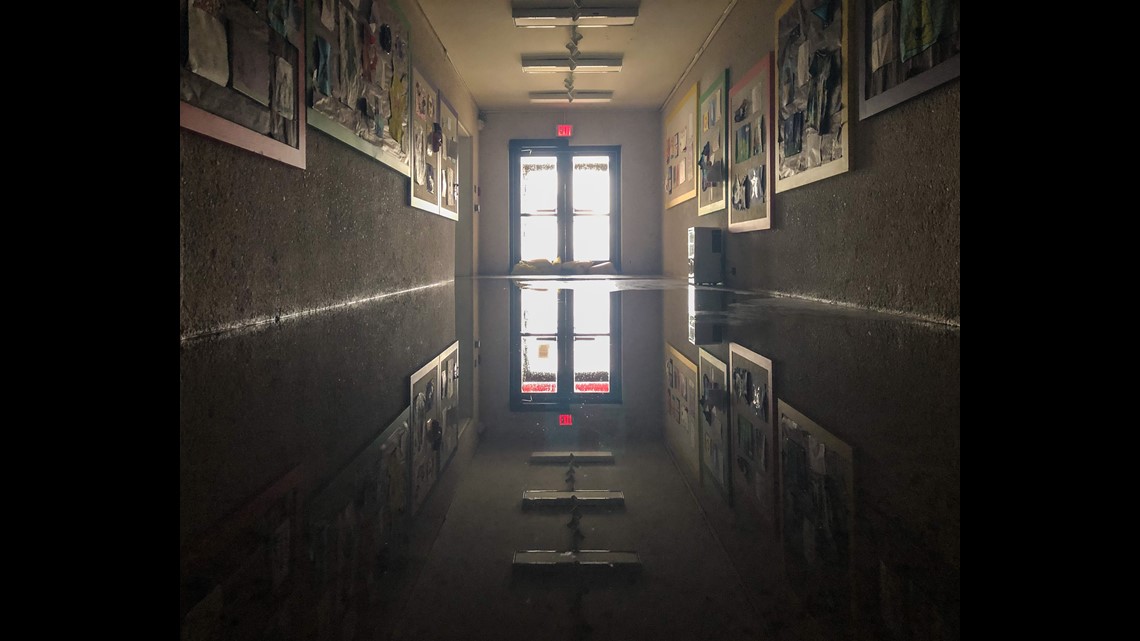


Fullerton says acting fast made all the difference. Job one entailed a lot of squeegeeing, vacuuming, using sand bags and having some extra assistance from the City of Corpus Christi. She described the loud sounds of the trash receptacle cutting loose, bobbing up and down in the bay and eventually coming back up onto the dock, slamming up against the building.
As images of the storm surge’s impact to the museum quickly made its rounds on-air and online, Fullerton said people from across the country began to reach out and see if everyone at the museum was OK.
Despite all this, there was minimal damage, and staff was able to protect the pieces of art. In all, mega dryers were used for about 10 days to get the building completely dry.
“It was a pretty dramatic in-the-moment experience, but we really felt like we had a fortitude, a good structure to deal with.”
The 3News Hurricane Preparedness Special airs Thursday night at 6:30 p.m. on KIII-TV.
Stay prepared with the following 3News guides to hurricane safety.
For the latest updates on coronavirus in the Coastal Bend, click here.
More from 3News on KIIITV.com:
- May 25, 2021 is officially 'Joe Gazin Day' in Corpus Christi
- Alligator from Louisiana shows up on Padre Island National Seashore
- A look at the homeless tent city in downtown Corpus Christi
- Corpus Christi native publishes book to help normalize disabilities, becomes best selling author
- IRS: Texans affected by winter storm have until June 15 to file taxes
- Ages 12 and older can now get the COVID-19 vaccine in Nueces County. Here's what you need to know.


